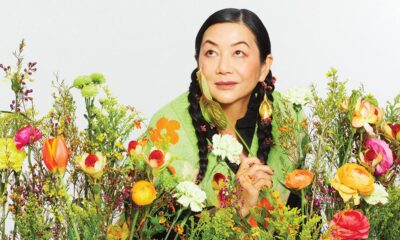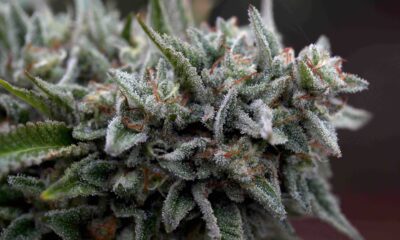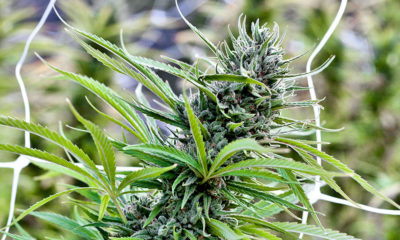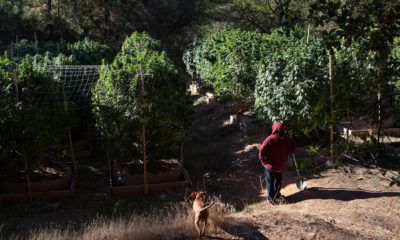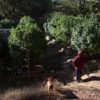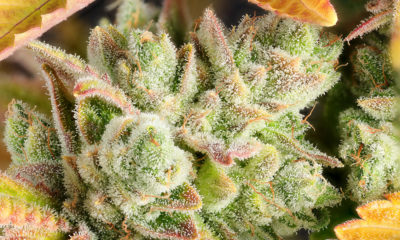Swami Select: Sun, Moon & Star Grown
The consumption of cannabis has ancient roots, Swami Chaitanya explains, while sitting on the couch meticulously grinding up cannabis and rolling a joint of last year’s Chemdawg harvest. He’s telling the group of friends gathered in his living room – a space filled with religious books, paintings and statues of all kinds including a life-sized Egyptian Sarcophagus displayed upright at the end of the sofa – a story about the Scythians, a nomadic army who brought cannabis with them on a westward journey from Central Asia to southern Russia in the 7th century BC. The joint is wider than a pencil and contains outdoor, organic herb grown on the property at its peak moment of flavor, Swami’s partner Nikki Lastreto explains, as the cannabis has had sufficient time to cure. While sampling the herbal inspiration, those gathered for a Hindu temple dedication the following day remain engaged to the teachings of their host, a West Coast cannabis holy man, dubbed by Rolling Stone Magazine as, “The Swami of Pot.” The Scythians, he says, would cover themselves in a cloth and throw cannabis on heated stones.
“But, why did they do it?” he asks. He explains the ancient hotboxing technique used as a part of Scythian funeral ritual. “Well first of all they’d end up laughing uproariously. But, also when they came out of the tent and are now out in nature again, because cannabis heightens your awareness, that meant that the Paleolithic people could hear better and see better and smell better. So, they had a better chance, not only of surviving, but of thriving. That gave them an advantage.”
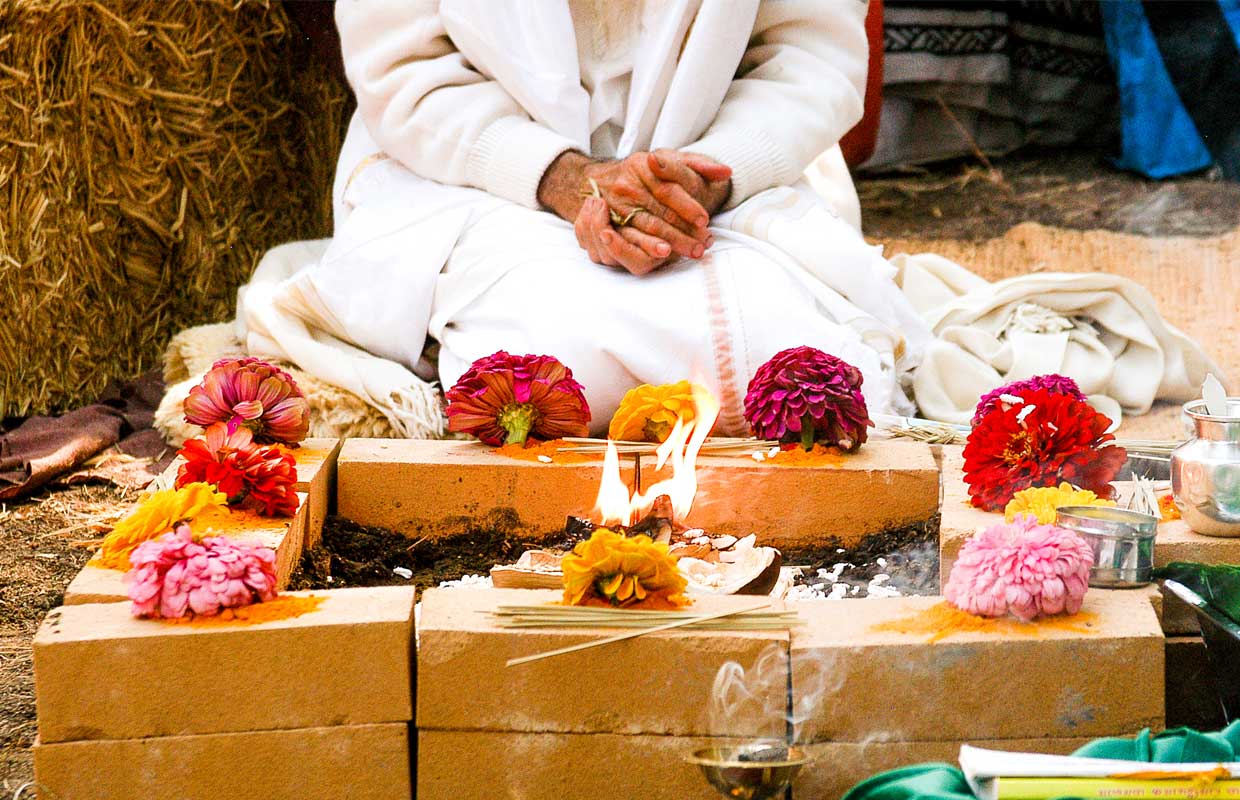
Its late night at Turtle Creek Ranch, the Northern California cannabis farm where Swami and Nikki have invited their friends to spend the evening in anticipation of the opening of the Sri Mookambika Madir (temple). As the group departs the living room space for various forms of lodging, the hosts ensure all their guests needs have been addressed. Nikki hosts lantern-led tours through the wooded area to a pair of compost toilets and outdoor sink as well as through the Amish barn that houses Swami’s woodshop alongside the set for the couple’s YouTube show, Swami Select. For a real treat, she says as her brown eyes sparkle, follow the path of electric candles to a hollowed tree where a Shiva statue rests dramatically at the base – sending out waves of divine inspiration into the otherwise dark country sky. Come morning, one finds many religious statues among the deciduous landscape including large stone angels. Nikki, a guest confesses, is a “recovering Catholic.”
Calling himself an “original hippie” Swami started his life as an East Coast intellectual and grew his first cannabis plants in the heart of San Francisco on a south facing slope of Telegraph Hill in the late 1970s. He has joined Nikki as a judge of the Emerald Cup, an outdoor, organic cannabis competition hosted in Northern California, since its beginnings in 2003. Nikki is a former journalist, having worked at the San Francisco Chronicle and local TV before traveling abroad to several countries, including India, before eventually making a home in the hills of Mendocino.
“They have known one another since 1969 in various incarnations as friends, spouses, spiritual brethren and business and land partners,” their website reads, while coining them as a cannabis couple.
They’ve recently partnered with Flow Kana, a San Francisco-based delivery service committed to transparency in the cannabis supply chain, to bring their sungrown herb and philosophies surrounding sustainable cannabis cultivation to a wider audience. In this regard, they also host a series of cannabis tasting parties at private homes in a series known as the Swami Select Salon. During each event Swami dons the white robes and long beard of Brahmin priests while expounding the inspiration that cannabis can provide.
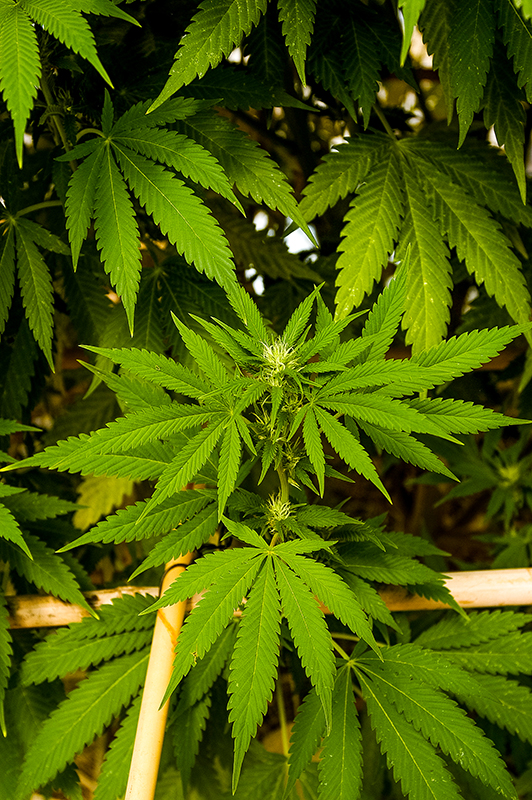
“To me spirituality isn’t anything other than every day… it’s not anything you do special,” he says over a joint of Black Lime Reserve at Turtle Creek Ranch. “As Ram Dass said it’s just being there, but totally being where you are. Being here and cannabis helps you do that.”
The bell for the temple dedication rings at 6 a.m. the next morning and all rise to begin preparing for the day. While the hearty 6-7-foot cannabis plants growing on the property behind a fenced area known as Ganja Ma Gardens are in view of the location where the temple dedication will take place, they are not today’s focus. Today, friends have brought fruits and flowers as an offering to the Hindu Goddess Mukambika at a temple dedication a decade in the making for Swami and Nikki. All in all, the group of about 30, spend four hours chanting with the priest to install Sri Mukambika in her temple. There are at least 320 zinnias, many different types of spices and a fire purification ceremony involving ghee, or clarified butter. After the ceremony, a brunette woman in her 50s tells those gathered in the kitchen of Nikki and Swami’s home that she is still feeling the power of the morning’s activities.
“I’m still vibrating, that baba, that love,” she says while carrying a silver platter of Indian food to her seat at an outdoor table.
Later, over joints on a front patio, several women confess they’ve eaten cookies prepared with cannabis-infused ghee, while another sits with cucumber covering her eyelids, as well as one in the center of her forehead covering her third eye. A blond named Amy says that when speaking to the divine, the divine also speaks to you and cannabis can help you be more aware of this voice.
As the afternoon continues some guests tour the cannabis garden. While marveling over the fine, pink hairs of the strain that’s coming in the fastest, the Hindu, Kristy who traveled to the event from Willits with her partner Guillermo, speaks of a meditative experience in India with bhang – cannabis prepared into a drink with milk or water.
“It was definitely a threshold and an opening for me,” she said of cannabis’ role in her own spiritual practice.
For Swami, cannabis is an integral part of his daily spiritual practice as well as his life as a farmer. He shies away, however, at a suggestion that the goddess of the new temple at Turtle Creek has a connection to marijuana.
“This particular form of the goddess isn’t so much connected with cannabis. In South India, from my experience, they do a little less cannabis than they do in the North, the babas [Hindu devotees]” he says.
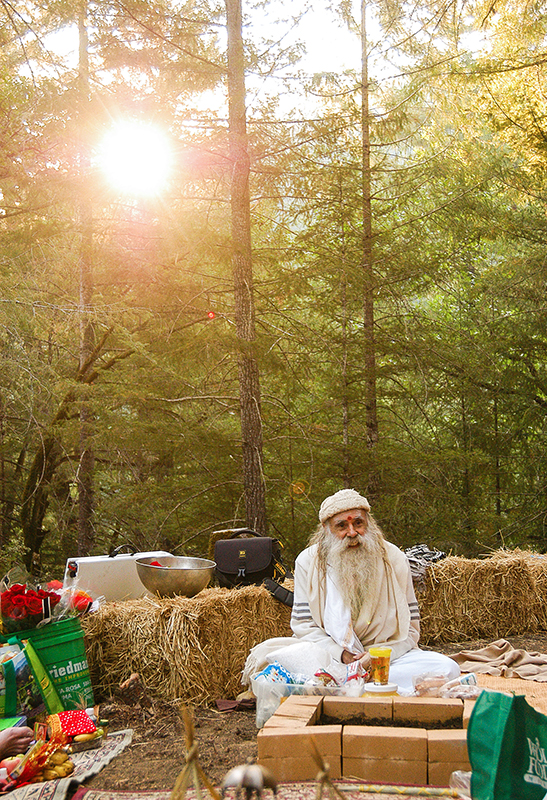
He does, however, acknowledge the role of spirituality and cannabis as well as the connection between cannabis and humanity itself.
“The essence of the spirituality in cannabis is actually in the genes, it’s in the genetic structure of cannabis. Sometime you’ll see a beautiful cannabis bud or flower or cola and it grows in a spiral,” he says. “It’s a sacred shape. It is our genetic DNA, the spiral, so it’s that way in which the plant itself mimics the inner nature of all things because we’re not the only ones that have DNA right?”
Swami says he uses cannabis for inspiration, an idea anchored in the religious ceremonies practiced in ancient India, where Brahmin priests and holy men believed it took them closer to enlightenment and the gods, by helping overcome hunger, thirst and pain. Each new strain selection for the Ganja Ma Garden involves a series of steps – mantras to be said and drops of water from the sacred Ganges River on each seed and upon transplanting each plant into the earth.
“You know, even in the Bible they say in Genesis that we’re given all the herbs for use,” Swami says. “All the flowers and fruits and herbs of the field are all for human use. And there’s considerable evidence that, for example, in the Bible they have this holy anointing oil and one of the ingredients in holy anointing oil is cannabis. So, it’s been used for tens of thousands of years in ritual form and we’ve kind of gotten away from the ritual use of it, but it still is kind of left over when you pass the joint. Right? That’s a kind of ritual, sharing and that’s actually as old as cannabis itself.”
Originally published in issue 18 of Cannabis Now. LEARN MORE.




